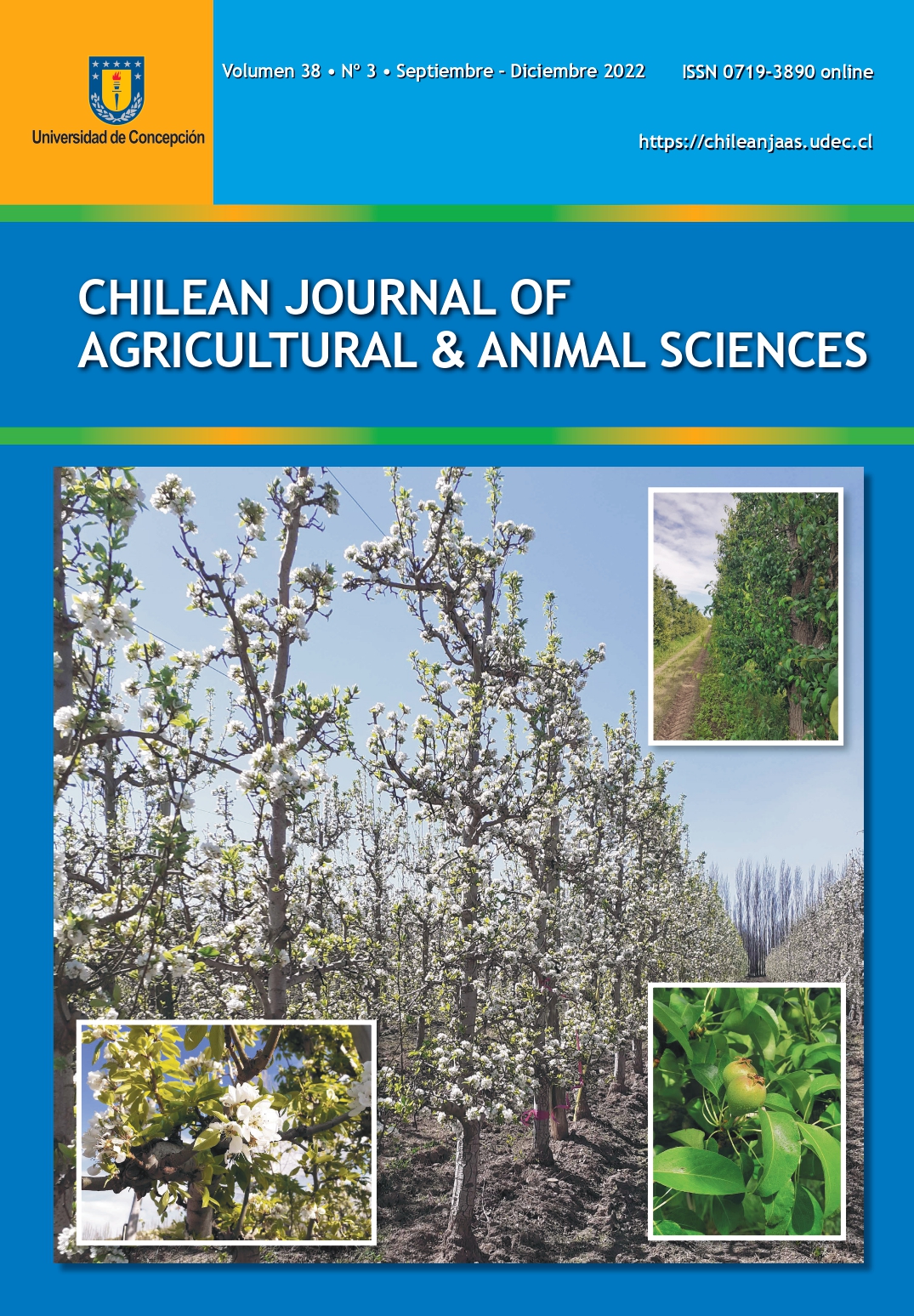GENETIC STRUCTURE AND DIVERSITY OF A PERUVIAN COLLECTION OF A HIGH-QUALITY WOOD TREE SPECIES, ULCUMANO (Retrophyllum rospigliosii, PODOCARPACEAE)
DOI:
https://doi.org/10.29393/CHJAA38-35CEBS10035Palabras clave:
Ulcumano, molecular markers, genetic diversity, population structure, germplasmResumen
Ulcumano, which is native to South America, is an important conifer in Peru. Molecular studies are scarce, limiting modern breeding and appropriate conservation activities. Currently, molecular markers are widely employed to explore genetic structure and diversity parameters of plant species in a fast and precise manner. The objective of this study was to analyze the genetic diversity and population structure of ulcumano in Peru by using DNA-based molecular markers. Nine Randomly Amplified Polymorphic DNA (RAPD) markers were used, while 95 individuals of ulcumano were sampled from three departments of Peru. A total of 265 DNA fragments were manually scored, but 247 of them were kept after removing the non-polymorphic markers. Genetic distances were calculated using R software based on Provesti´s coefficient. A dendrogram was obtained using the UPGMA clustering algorithm, showing no clear clustering. The principal coordinate analysis agreed with two population structure analyses, demonstrating that ulcumano is contained within two clusters, (i) Junín + Pasco, and (ii) Cajamarca, while very few individuals are intermixed. Genetic diversity parameters were estimated considering the two groups (populations) identified by STRUCTURE software. Nei's genetic diversity estimate varied between 0.22 and 0.28, while Shannon index ranged from 3.43 to 4.16. Population divergence (Fst) between the two clusters revealed low genetic differentiation (0.064). AMOVA analysis revealed that 87.31 and 12.69% of the total genetic variation were found within populations and between individuals, respectively. To the best of our knowledge, this is the first molecular study in ulcumano in Peru, and provides valuable information for the genetic improvement and sustainable management of this conifer in the country.
Descargas
Publicado
Cómo citar
Número
Sección
Derechos de autor 2022 Carla L. Saldaña, Johan D. Cancan, Evelyn J. Salazar, Sheyla Y. Chumbimune, Jorge H. Jhoncon, Carlos I. Arbizu

Esta obra está bajo una licencia internacional Creative Commons Atribución 4.0.







